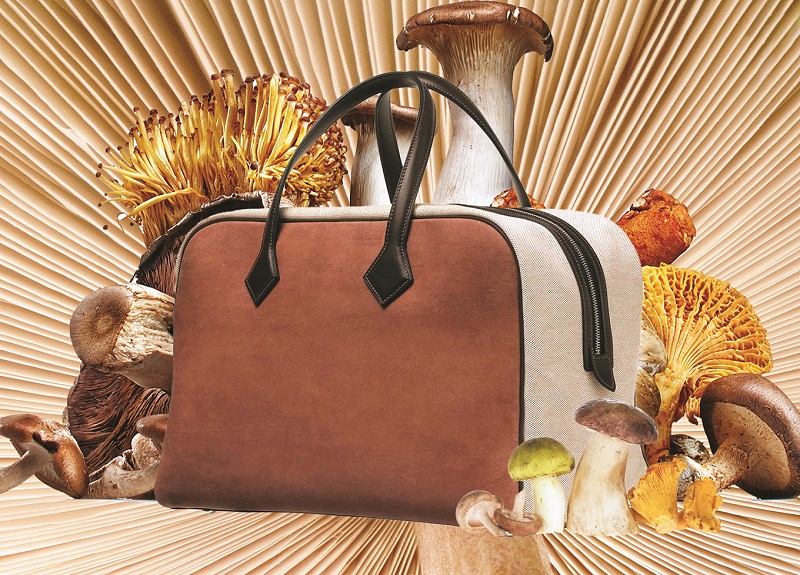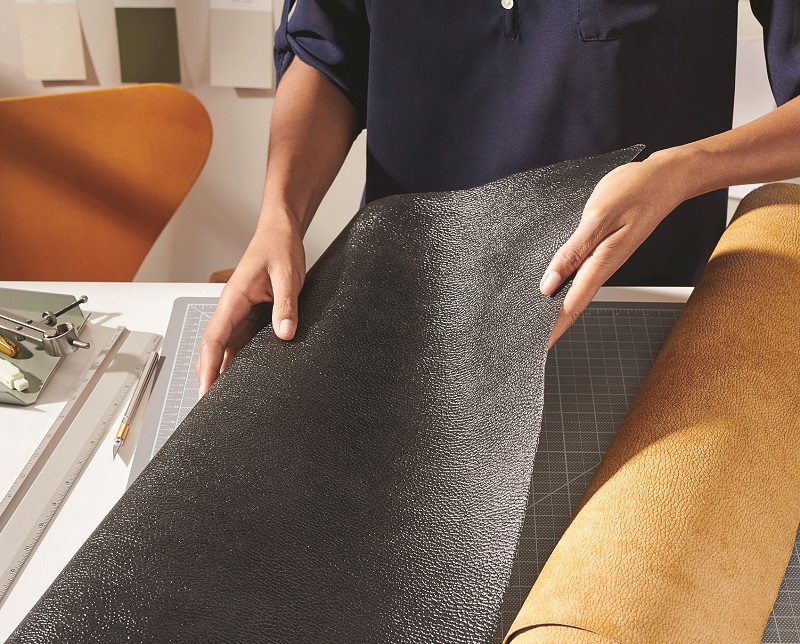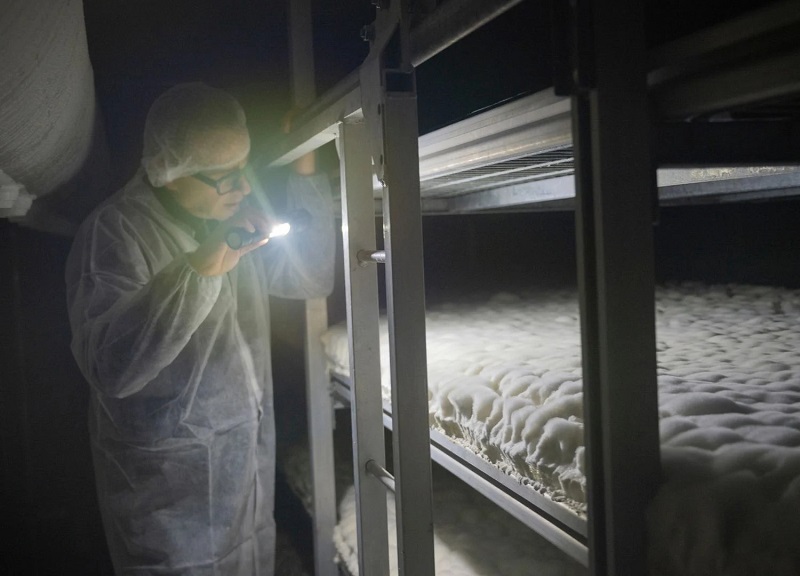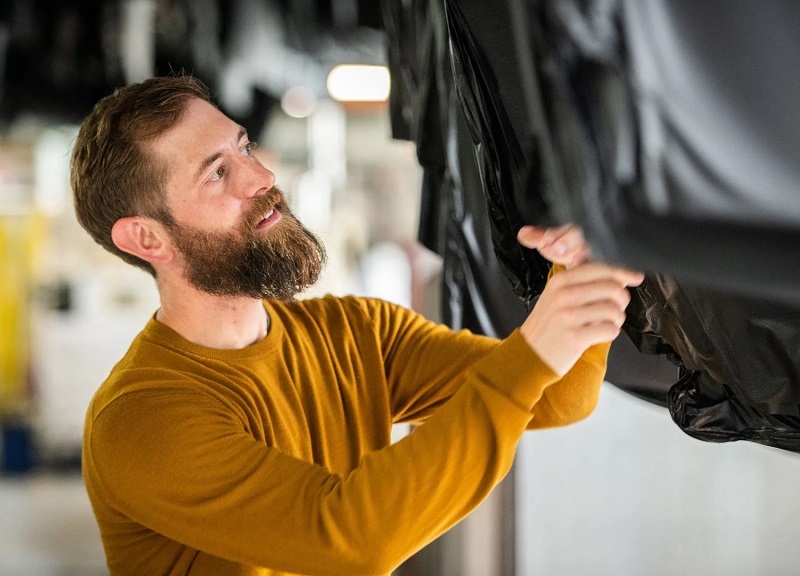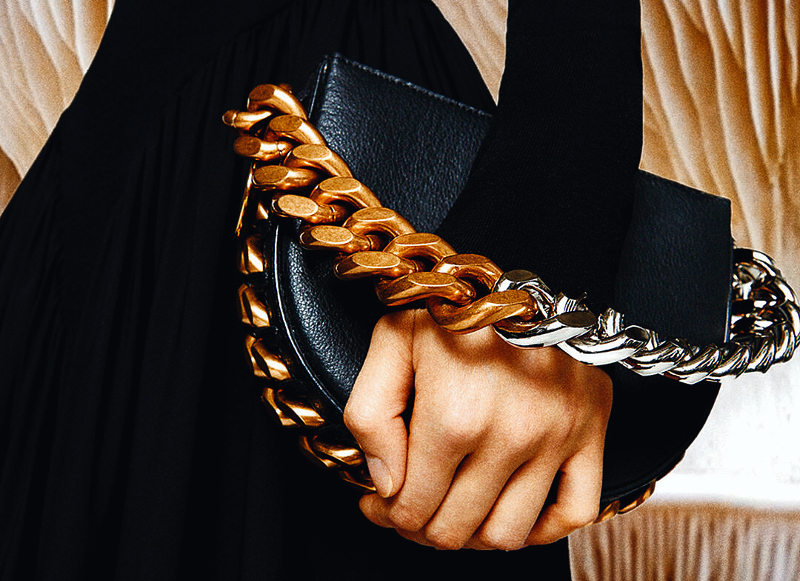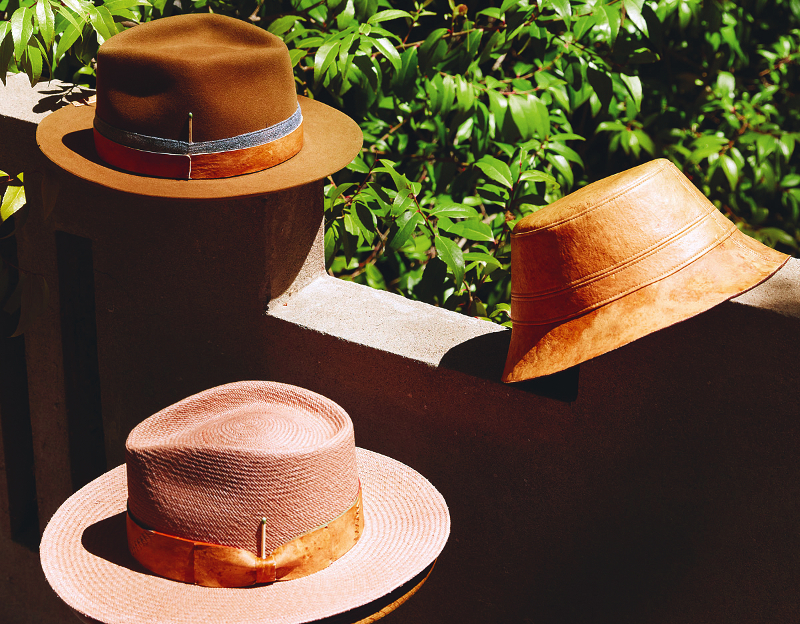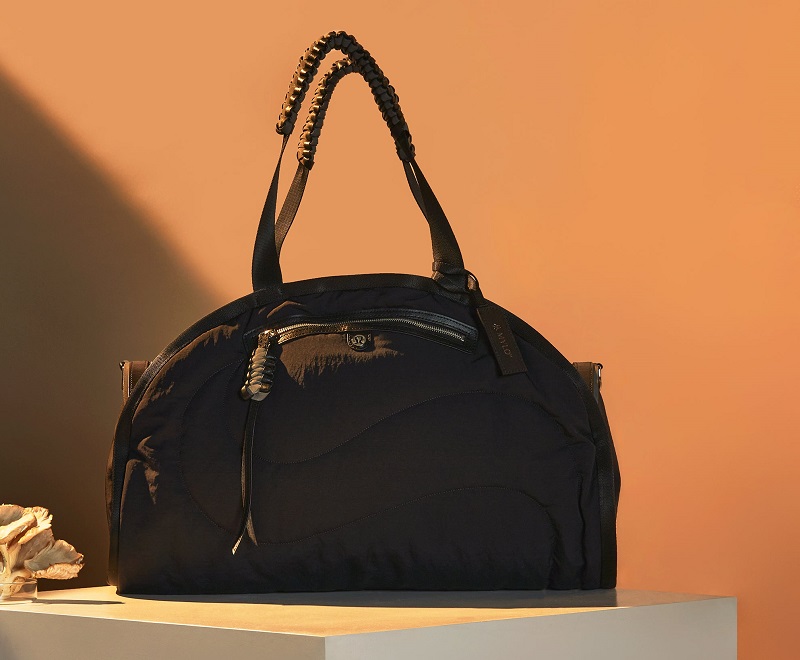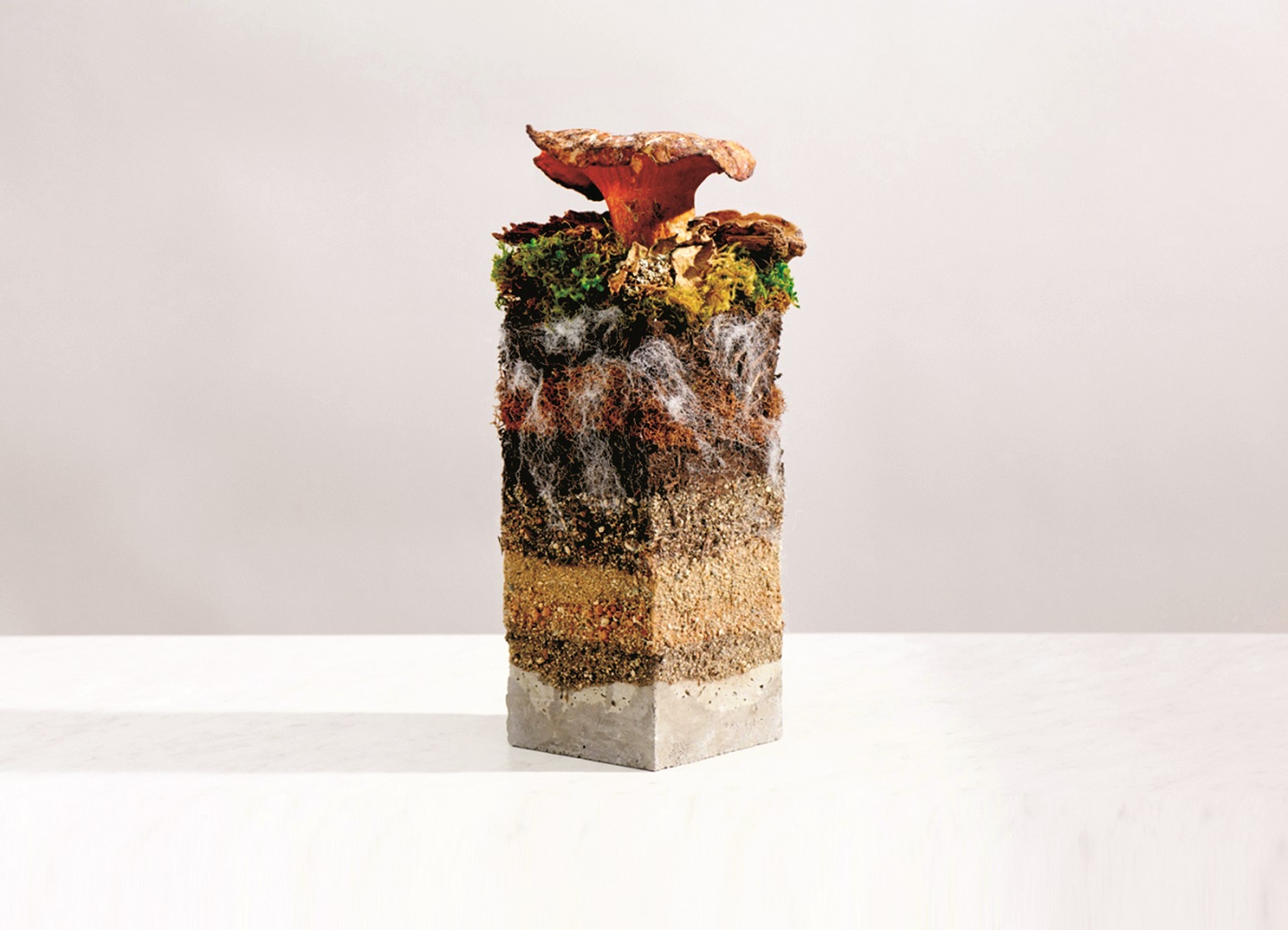
Mycelium is the branching threadlike vegetative roots of fungus (Photo: Bolt Threads)
LET THE FUN(GI) BEGIN
Mushroom-inspired fashion is sprouting as quickly as the fungi that appear in the wild. Beneath those charming buttons, fit to shelter ants and fairies, are mycelium, the branching threadlike vegetative roots of fungus. Aptly described as nature’s internet (or the “wood wide web”, if you will), this underground network that underpins all fungi can create everything from plastics and packaging items to plant-based meats and human organs. Now, the infinitely renewable root-like system has made its way to our closets as biomaterials for clothes, shoes and bags slung over our shoulders. For every step we take, there are roughly 300 miles of mycelium stretching underfoot.
EARLY ADOPTERS
Sculptor Philip Ross had been working on art projects with mycelium a decade before he co-founded MycoWorks with Sophia Wang in 2013. Years of cultivating mushrooms inside a lab in Emeryville, California in the US have led to the birth of Reishi, a luxury biomaterial that outperforms leather in strength and matches it in durability and appearance. Its commercial viability represents a major leap in fashion, courting luxury brands such as Stella McCartney and Hermès which have taken to the buttery-soft quality of mycelium leather.
In March 2021, Hermès and MycoWorks unveiled a sample for the French maison’s Victoria travel bag, reimagined with Sylvania, an exclusive amber-hued mycelium leather. Designer Stella McCartney has been working closely with California-based fabric producer Bolt Threads (where she was first introduced to spider silk and the mind-bending potential of biofabrication) to scale its most promising innovation Mylo, grown from mycelium. A vegan herself, McCartney has continued to push for her anti-animal stance by joining a consortium started by Bolt Threads with Kering, adidas and Lululemon to invest in Mylo’s development.
AN EARTHY TOUCH
Experts have lauded its suppleness — similar to suede but with a cork-like texture — that can give the same emotional response as animal leather. Because mycelium is harvested as a foamy layer and mimics the microstructure of collagen, it gives the final material a warmth and sponginess not possible in synthetic options. Some manufacturers even tan the vegan alternative to replicate the unique grain of its animal counterpart. Its additional boon as a thermal insulator that absorbs damp makes it suitable for creating lightweight, transpiring and water-repellent garments or accessories.
ROOTED IN GREEN
A new crop of manufacturers is harnessing mycelium to create leather-like materials, sans the cow, with a lower environmental impact. And since fungi are decomposers that feed on biomass, mycelium leather production is powered by carbon pulled out of the atmosphere. Unlike many synthetic leathers, those made from mycelium do not contain petroleum-based materials such as polyvinyl chloride (PVC) and polyurethane.
Moreover, the carbon footprint of mycelium is exceptionally small, particularly compared with resource-intensive cows, which take years to raise. Like Bolt Threads’ most successful invention Mylo, it can grow on a sheet of sawdust in about two weeks without using the amount of land and water it takes to raise cattle.
FOOD FOR THOUGHT
A report by the Higg Materials Sustainability Index found that bovine leather wreaked more environmental damage than any other fabric, including plastic-based synthetic leather, due to the deforestation and gas emissions associated with livestock rearing. However, in order for mycelium to make a substantial impact on sustainability, it must be accessible at a lower price point to convince high-fashion design studios, which have constantly worked with double face cashmere and silk organza, to make the switch.
But here comes the controversy: Fashion giants have been lambasted for recasting vegan leather as more environmentally sound, even though plastic polymers have been used to produce the wrinkled texture that gives the effect of real leather.
“The devil is in the details,” cautioned experts, who encourage users to ensure a brand has a clear supply chain if they want to buy any form of leather.
“Opt for vegetable tanning and be aware of the detrimental effects of plastic-based materials,” they urge.
Check out these mushroom-based products in the market:
Frayme Mylo
Stella McCartney, with the expertise of Bolt Threads, has launched its first luxury bag made from Mylo. After going through 5,000 iterations or so, the LVMH-owned brand has perfected the fungi-inspired bag and launched it at its summer 2022 runway show. Only 100 pieces, each individually numbered, are available but the eponymous designer may add the arm candy to its main collection from 2023 onwards. In keeping with the fashion brand’s ethos to minimize environmental impact, Mylo is coloured with Bluesign-certified dyes to ensure customer safety.
Available exclusively via stellamccartney.com. £1,995.
Boletus by Nick Fouquet
Reishi makes its first-ever commercial debut with a dapper bucket hat. Named Boletus, it is the result of a partnership between MycoWorks and famed hatmaker Nick Fouquet, whose celebrated clients include the likes of Los Angeles Lakers star LeBron James, singer Madonna and Oscar winner Nicolas Cage. Two additional toppers — the Coprinus straw hat in rose and the Morchella in baby suede — also use Reishi as decorative trims. In case you didn’t know, these unisex designs are named after mushroom species.
See more at nickfouquet.com. The Boletus is priced at US$810.
Barrel duffle bag
Lululemon’s first outing in fungi fashion comes in the form of an elevated gym or overnight bag, crafted from 100% recycled nylon with fungi-friendly leather accents on the woven handles and braided pulls. Wear it like a cross-body when you switch out the long shoulder strap or just tote it from the treadmill into the office without fuss. The athleisure brand has also rolled out a portable yoga and meditation mat that caters for the mindful on the move.
Purchase at shop.lululemon.com. Bag at US$328; yoga mat, US$238.
This article first appeared on Sept 26, 2022 in The Edge Malaysia.

